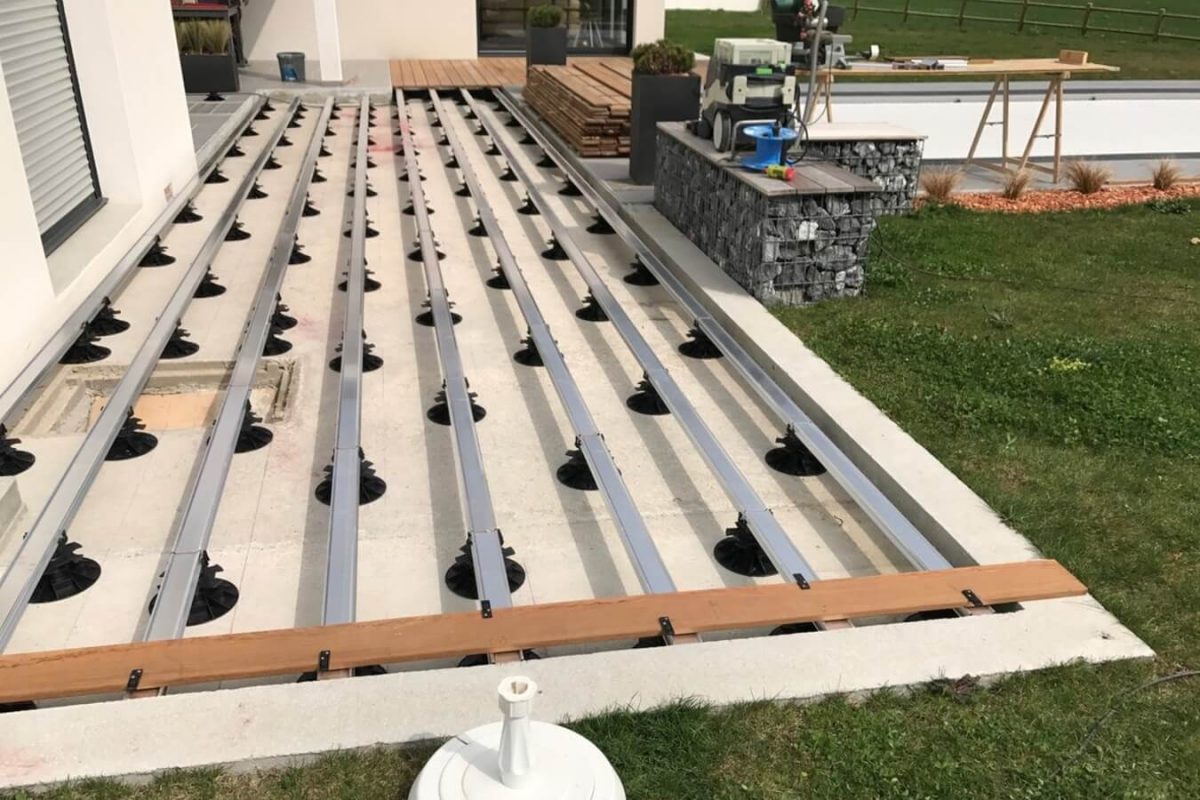Fixing Elements
Reliable Deck Substructure
You have probably already chosen the boards for yours decking. Our congratulations, you have made a big step forward! We believe it was not easy to decide on the type of wood or its quality, but we know you have made the right choice. But a deck is not just only decking boards. Another solution awaits you to choose the elements that will firmly connect, support and hold the decking boards. Without these three of them, you’ll have no way to go around – the supports, joists and fixing elements. What they should be and what’s new in this area – read this article those who want committed to installing a deck themselves.
Deck supports & pedestals
Let’s start with the supports. If you want a flat deck surface – choose height-adjustable, sturdy, pressure and weather-resistant supports / pedestals (which are made of polypropylene) as these are one of the best foundation for a high-quality decking. Even if you think that the surface on which you are installing the decking is like a mirror, don’t be fooled. And even if it does, it does not mean that there will be no irregularities after a while time. In addition, if your deck will be with steps, or if you are installing it directly on the ground (no fixed foundation), on the pebbles or flat roofing, adjustable height supports will definitely be needed.
Deck joists
The second element without which you will not be able to install a deck – joists. Because technology don’t stopped on place, traditional wooden joists are now outpaced by more innovative ones, such as those with an aluminum profile on the outside and a thermo-wood insert on the inside. This decision determines the uniqueness of these profiles. They are smooth, stable and durable, do not distort or move the decking boards, do not break or tighten the fasteners.
You won’t believe it, but the robustness of the aluminum profiles can still save you money on the supports you’ll spend. Where’s the secret? When using regular decking joists, the distance between the support points cannot be more than 500 mm, so 3 pieces of support are required per meter. Meanwhile, when using aluminum profiles, the distance can be every 1100 mm, so 2 supports instead of 3 supports will be needed per meter. Thus, 1 supports feet is saved per linear meter.
Deck fasteners
The third necessary element of a deck during boards installation – fasteners. We immediately recommend you those which are invisible (why ruin the aesthetic look of the decking!). They should be made from a variety of high-quality stainless steel or plastic composite and reinforced fiberglass, as it is these materials that provide resistance to UV radiation, cold, heat and corrosion. These assertions have some other special advantages. First, they are easy to install on a deck. Second, they ensure that there is a space between the decking boards and the support joists.
How are these fasteners mounted? First they are screwed to the decking boards. It is likely that you will place the boards side by side and attach the fixings to each of them using two screws (holes are provided for these self-tapping screws). A special tongue significantly speeds up this work by allowing smooth attachment and screwing. When you have done this, turn the boards one by one and face them and fasten the wood screw to the special place provided for its mounting. The above-mentioned tongue does one more thing – it is the innovative solution that allows to make even gap between the boards. These gaps between boards are needed for the wood to “breathe and move” as well as for rain water drainage.
These fasteners are suitable for most popular wood as larch wood, hardwood, tropical and exotic wood, as well as thermo wood. It can be also used for other types of wood, but it is best to consult a specialist before buying. Well, if you have purchased any of the listed wood types above, be sure, at some time to ask for stainless steel fasteners. They are more resistant to corrosion, acid and alkaline effects, as well as wood’s “walking and stretching”.

